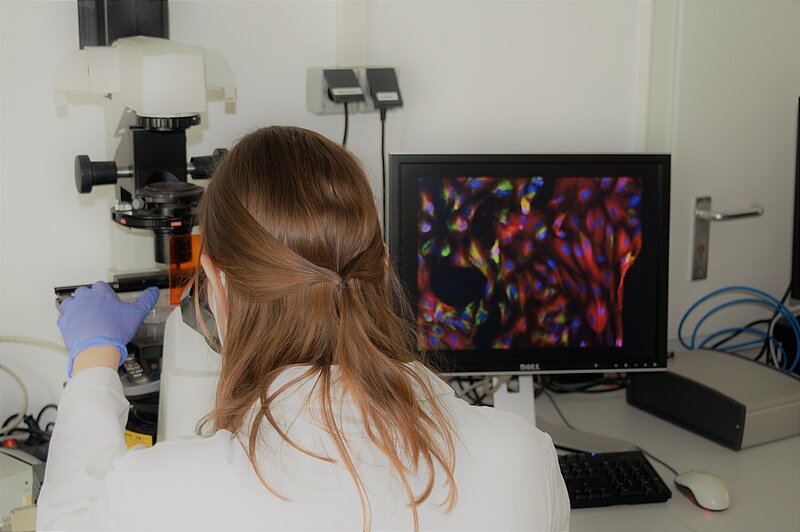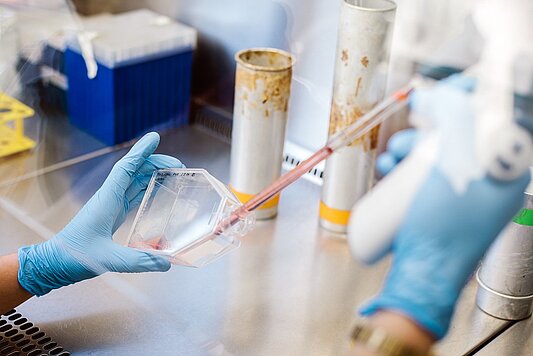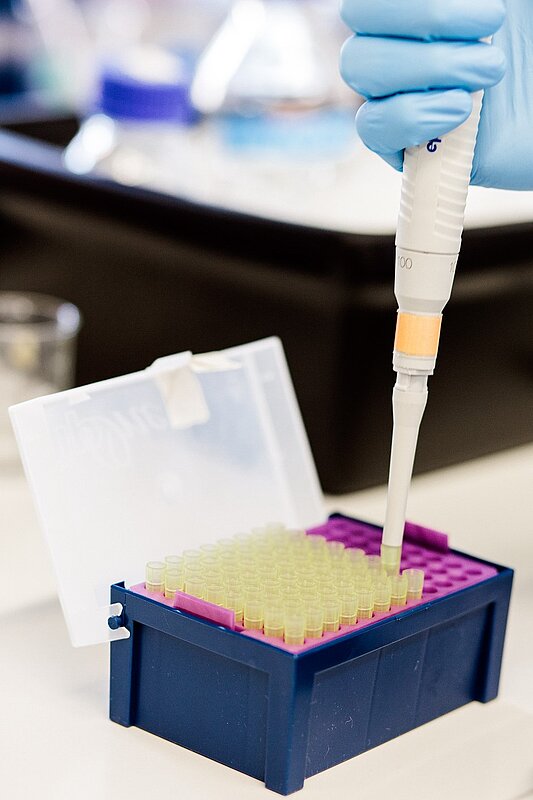Stem cells
Stem cells are cells that can differentiate into all cell types and tissues present in the body. Since 2007, it has been possible to reprogram already differentiated cells, such as fibroblasts from the skin, into so-called induced pluripotent stem cells (iPSCs). This is done by reactivating certain developmental genes. Cells differentiated from iPSCs also allow us to access human target cells in the laboratory, which under normal circumstances cannot be obtained directly from humans, i.e. primary.
Neuronal cells
Overview of the different neuronal cells differentiated from stem cells.
In our research group, iPSCs are differentiated into various neuronal cells in order to answer different questions. For this purpose, the stem cells are treated with factors that correspond to the signaling molecules that ensure that neurons are generated during embryonic development.
We started with motor neurons, to work on a replacement for the mouse bioassay for activity testing in batch testing of pharmacologically used botulinum neurotoxins.
We are differentiating mixed neuron and astrocyte-containing cell populations and, in the future, microglia, to develop a brain model to identify, for example, substances that may interfere with the communication of the cells just mentioned during embryonic development and thus contribute to developmental disorders and may contribute to the development of neurodegenerative diseases later in life.
In addition, sensory neurons and the supporting Schwann cells are differentiated from iPSCs in order to incorporate them into a 3D skin model, for example, to identify substances that can trigger contact allergy.
“Mini-intestines” or intestinal organoids
In our group, intestinal organoids are differentiated from human iPSCs. In addition, intestinal organoids are also generated from porcine intestinal stem cells. Advantages of these "mini-intestines" compared to classical cell cultures from continuous cell lines are manifold: It is particularly interesting that the epithelium of intestinal organoids does not only contain absorptive enterocytes, but is as diverse as the cell composition in vivo. Intestinal organoids give rise to cells of the stem cell niche, i.e. intestinal stem cells and Paneth cells, and are therefore capable of self-renewal. Other cells are differentiated from these intestinal stem cells: For example, M cells, which take on a special role in host-pathogen interaction. Secretory cells, such as goblet cells and enteroendocrine cells are also formed. Moreover, crypt formation even occurs in vitro. Intestinal organoids therefore represent much more physiological model systems than continuous target lines. We use these organoids to study the interaction of pathogens with the intestinal epithelium.
Methods
Methods used in the AG Seeger:
Cell culture
RT-qPCR
PCR
Immunocytochemistry
Flow cytometry
Western blot
ELISA
Assays for cytotoxicity (MTT, WST, LDH,..)
Assays for enzyme activity (CYP1A1, CYP2B1,...)
Assays in multimode platereader: absorption, luminescence, fluorescence
Genetic engineering of stem cells via CRISPR/Cas9










